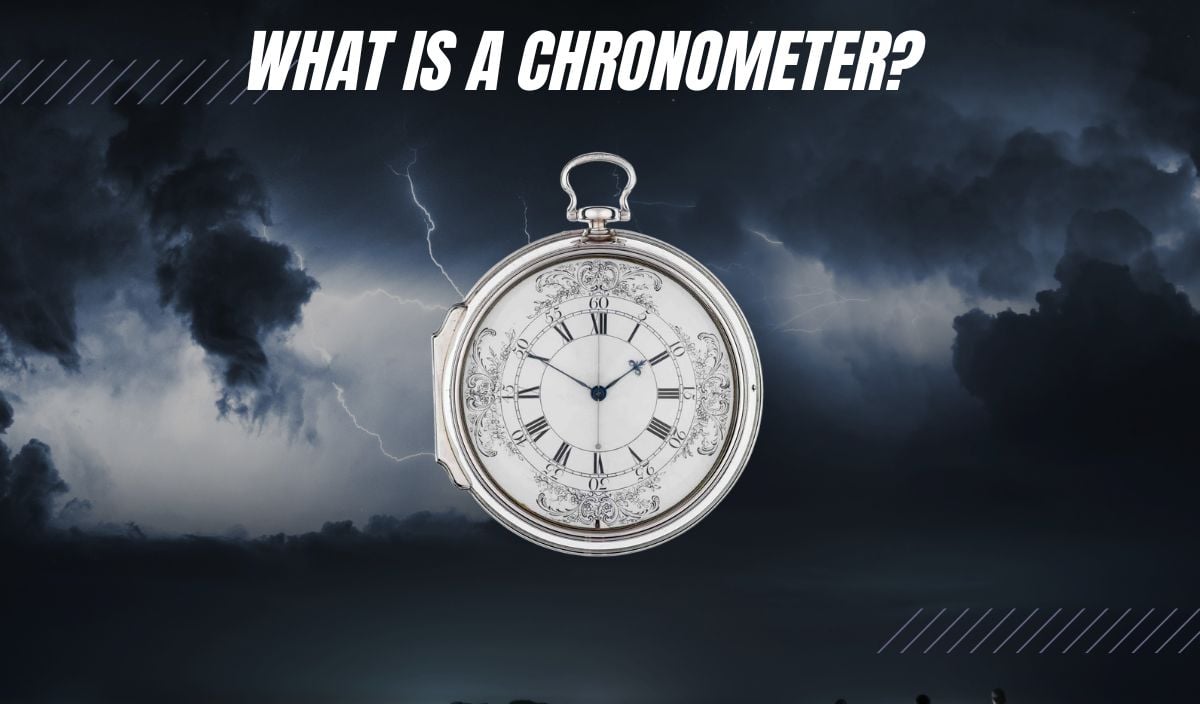
What is a Chronometer?
The world of watches can be a confusing place. There’s a whole bunch of terminology that can be puzzling even to the most experienced watch collector, let alone those of us completely new to timepieces. From tourbillons to tachymeters, perpetual calendars to power reserves and bezels to balance bridges, know that it’s okay to feel overwhelmed by all these different terms.
I guarantee all of us, at some point in our watch collecting journey, have had to Google what these words mean. And I’d bet my money that one of the most frequently asked questions is: “what is a chronometer?”
Think of a chronometer watch as an overachiever, the clever one in school. It’s a watch that has passed a super strict set of accuracy tests, typically by an official body known as COSC in Switzerland (although there are other bodies we’ll get to shortly).
The watch has basically been to a boot camp to ensure it is super precise; the movement is tested in different positions and temperatures to ensure it keeps near-perfect time. People choose chronometer watches when they want undeniable reliability, whether that’s an essential lifestyle requirement or just a cool thing to boast about with their friends.
History of Chronometers
Like most inventions, the chronometer was created out of need. During the 18th century, a serious issue faced by sailors traveling out at sea was their inability to accurately determine their longitude, making navigation tricky and often dangerous.
Enter John Harrison, a British clockmaker who, in 1735, created the first marine chronometer. His invention was a game changer, allowing sea-dwellers to navigate the ocean with incredible levels of accuracy. It was kind of like giving sailors a GPS long before satellites were even a thing.
Over the years, chronometers got smaller and more precise, eventually moving from ship decks to wrists. Chronometer watches became popular during the early 20th century as the demand for accurate timekeeping skyrocketed. It was here when organizations like COSC were founded, created with the aim of certifying chronometer watches under a strict set of standards. Now, only the most precise timepieces earn the title “chronometer”.
Now, with GPS systems aboard, we don’t need chronometers to set sail, but the precision of a chronometer wristwatch is still necessary and impressive. They have become symbols of reliability and craftsmanship, with typically only the finest watchmakers in the world able to create chronometer-certified watches.
Chronometer Certification Standards
There are various chronometer certifications, each with its own testing method. So, if you’re looking for a chronometer watch for yourself, it’s good to know which certification your watch has passed. Even some watch brands, known for crafting their own in-house movements, have developed their own chronometer certifications to show their dedication to precision and craftsmanship. Let’s look at some of the best-known chronometer certifications and what is involved in each…
COSC Chronometer
The Contrôle Officiel Suisse des Chronomètres, abbreviated to COSC, is the most common standard of chronometer certification. The Swiss establishment was the first institution to certify watches as chronometers, demanding the best in accuracy and craftsmanship. Following its founding in 1973, it still demands a very specific set of specifications from a watch to earn its prestigious certification. Those that do pass receive a coveted COSC certificate.
Watches that are assessed under COSC undergo a series of tests over 15 days. These assess a movement’s precision under different conditions, including temperature variations (8°C, 23°C, and 38°C) and positional changes (like crown up, down, and horizontal). The watch must maintain a daily rate within a tight range of -4 to +6 seconds to pass.
METAS Chronometer
METAS Chronometer certification is another respected standard, but one set by the Swiss Federal Institute of Metrology (METAS) in collaboration with Omega. It goes beyond traditional chronometer testing to ensure even higher levels of precision and durability. To achieve this certification, a watch must pass COSC certification before undergoing additional tests conducted by METAS.
These tests include exposure to magnetic fields up to 15,000 gauss, different temperatures, and even different water pressure levels to verify its robustness. Additionally, the watch’s accuracy is assessed in six different positions and at two different power levels—fully wound and with a 33% reserve. METAS-certified chronometers guarantee a daily precision of 0 to +5 seconds.
Superlative Chronometer
Superlative Chronometer certification is exclusively awarded by Rolex to its own timepieces. Like METAS, it goes beyond the standard of COSC chronometer testing, ensuring that every movement meets Rolex’s own stringent standard. Again, every movement must first pass COSC certification before then being handled by Rolex’s professional watchmakers, who take the fully assembled watch – not just movement – in-house for further testing.
These tests include placing the watch in multiple positions and in varying conditions such as freezing, hot and magnetic environments. They also test for waterproofness, power reserve, and automatic winding proficiency. To receive Superlative Chronometer certification, the watch must maintain a daily rate of -2 to +2 seconds, making Rolex Superlative Chronometers some of the most accurate in the world.
Grand Seiko Special Standard
As its name suggests, the Grand Seiko Special Standard is a certification exclusive to Japanese watchmaker Grand Seiko. Hoping to prove Japanese watchmaking can be just as precise and reliable as Swiss, the brand has created their own certification even stricter than COSC.
To receive the Grand Seiko Special Standard certification, a movement must undergo rigorous testing for 17 days across six different positions and at three temperature settings. The movements are also tested in both horizontal and vertical orientations. The daily deviation allowed is between -3 to +5 seconds, exceeding the standards set by COSC.
German Chronometer Standard
The German Chronometer Standard is a certification similar to Switzerland’s COSC but one that is dedicated to testing the accuracy of German-made watches like those from Glashutte Original. The standard is found under certification DIN 8319, with specifications equivalent to those of the ISO 3159.
It values a series of tests over 15 days, with the movement tested in five positions and at two different temperatures. Like COSC, it must also maintain a daily rate of accuracy within -4 to +6 seconds. However, unlike its Swiss counterpart, the German Chronometer Standard involves testing the fully cased watch, not just the movement.
Patek Philippe Seal
Patek Philippe also has its own chronometer certification unique to them. In 2009, they established a seal that represents the rigorous standards of their movement manufacture, once again going above and beyond the standards set out by COSC.
To earn the Patek Philippe Seal, a watch must maintain a daily accuracy of -3 to +2 seconds in several positions and at different temperatures. Additionally, the watch’s durability, finishing, and overall craftsmanship are examined, so you’re guaranteed some of the finest levels of watchmaking in the world.
Qualité Fleurier Standard
The Qualité Fleurier Standard, also sometimes known as the FQF Quality seal, is a certification process for mechanical watches made entirely in Switzerland. This means every part of the watch must be 100% Swiss-made.
Then, the movement must pass the tests of the COSC, followed by the FQF’s additional tests, including accuracy checks in different positions and temperatures, ensuring it maintains a daily deviation of -0 to +5 seconds.
Chronometers vs Chronographs
Chronometer and chronograph are two watch terms that are often confused with each other – understandably so since both begin with “chrono”. But in fact, chronometers and chronographs are totally different.
As we now know, a chronometer is all about precision; it’s a watch that has been officially certified to keep time super accurate, passing rigorous tests. A chronograph, however, is a watch built with a stopwatch function, allowing you to measure elapsed time with separate sub-dials.
Fun fact: you can have a chronometer chronograph, a watch awarded chronometer certification equipped with a handy stopwatch complication.
Popular Chronometer Watches on Exquisite Timepieces
If you’re into precision timepieces, chronometers are where it’s at. At Exquisite Timepieces, we have a number of exceptional chronometer watches for you to enjoy. Here are some of the most popular, as rated by our customers:
Omega Constellation Globemaster Omega Co-Axial Master Chronometer 39mm (ref. 130.33.39.21.03.001)
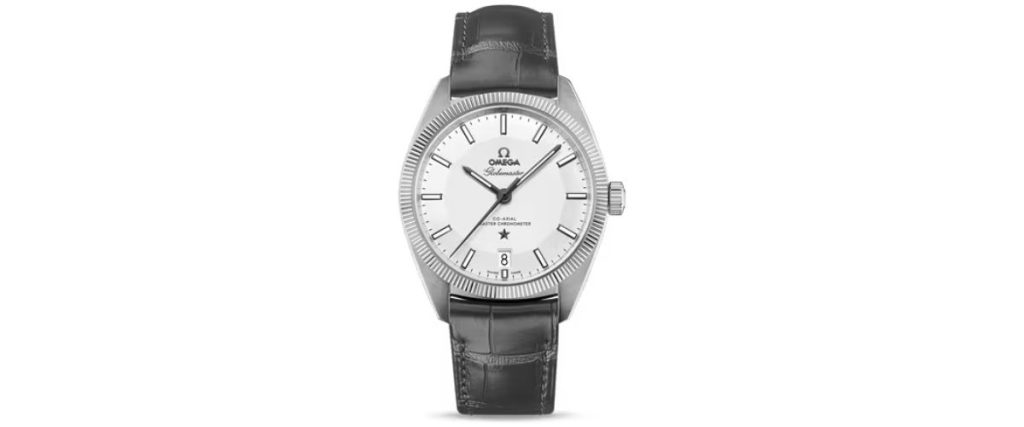
Known as one of Omega’s Master Chronometer watches, a family of timepieces certified by METAS, this Omega Constellation Globemaster Omega Co-Axial Master Chronometer 39mm promises incredible levels of accuracy and reliability. The movement, with its co-axial escapement, is highly anti-magnetic and promises a healthy power reserve of 60 hours.
It’s also a beautiful watch externally, featuring a 39mm stainless steel case with a scratch-proof fluted bezel and 100 meter water resistance. The dial is the star of the show for me, though, colored in blue with an unusual star-shaped dome finish set with Super-LumiNova infilled hands and indexes.
Frederique Constant Highlife Automatic COSC Silver Dial (ref. FC-303S3NH26B)
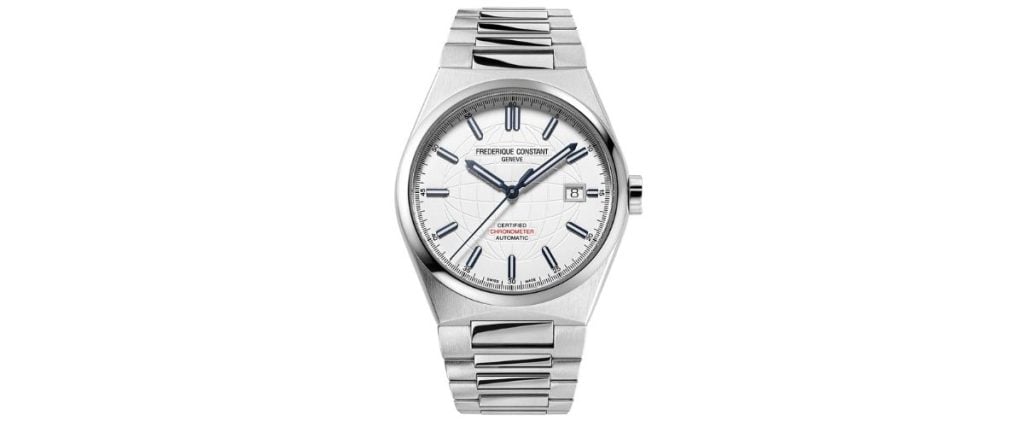
Possibly one of the most affordable manufacturers of chronometer watches, Frederique Constant has truly reached their goal of making luxury watchmaking accessible to everyone. For less than $2,500, they offer a COSC-certified full-metal sports watch with their Frederique Constant Highlife Automatic COSC Silver Dial model, powered by the Caliber FC-303 with a 38-hour power reserve.
It, too, has a 39mm stainless steel case, but one with a sporty, integrated architecture that flows into the brushed and polished H-link bracelet. The dial is crisp white and uniquely embossed with a globe motif across the center.
Grand Seiko SLGH021
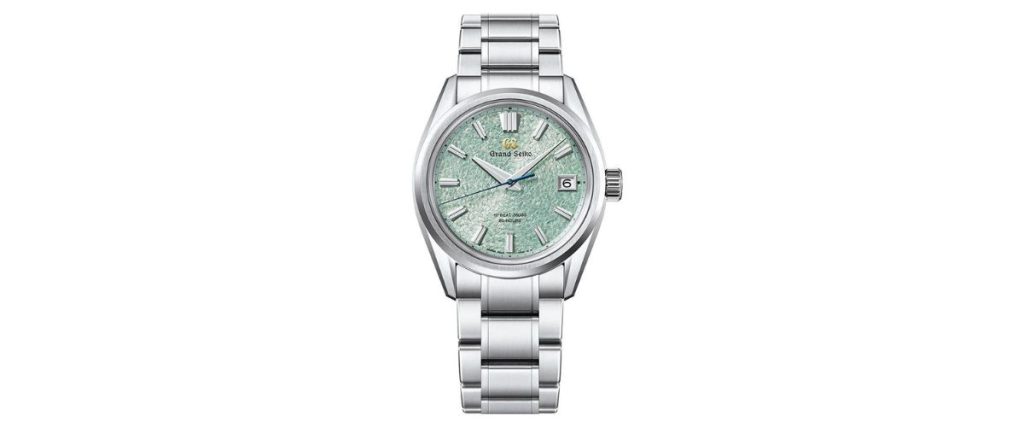
Grand Seiko has a number of impressive in-house movements worth mentioning, but their Caliber 9SA5, found inside the Grand Seiko SLGH021 Limited Edition, is one of their Grand Seiko Special Standard movements. With a daily rate of +5 to -3 seconds per day, a power reserve of 80 hours, and a frequency of 36,000 vibrations per hour, it becomes one of the most impressive chronometer movements on the market.
The watch is also absolutely breathtaking, featuring an intricately detailed, mosaic-like mint green dial inspired by the colors of the Genbi Valley landscape and a 40mm wide Ever-Brilliant steel case polished using the brand’s famous Zaratsu technique.
Glashütte Original Senator Chronometer (ref. 1-58-01-02-05-30)
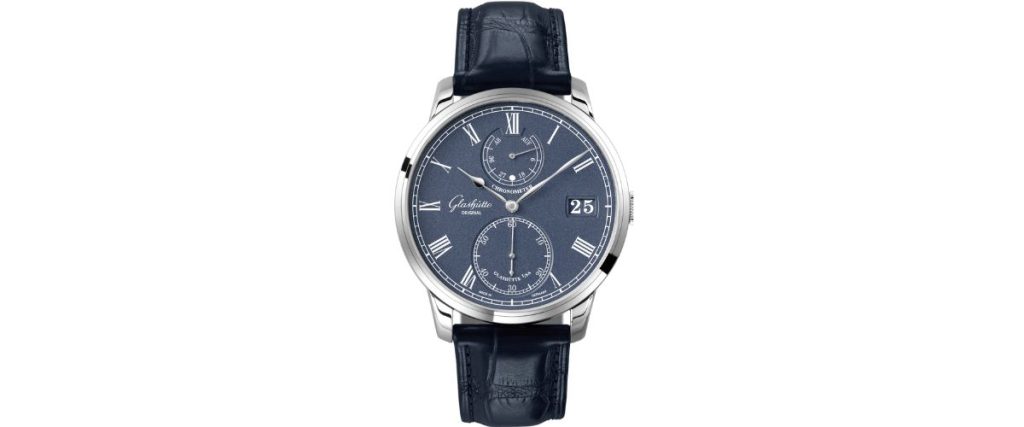
Offering a more traditional aesthetic, one that harks back to some of the world’s first chronometers, the Glashütte Original Senator Chronometer watch is powered by the in-house Caliber 58-01, a manual winding movement with a 44-hour power reserve and chronometer certification.
The movement is housed within a luxurious 18ct rose gold case, measuring to 42mm wide and just 12.6mm tall, strapped to the wrist by a dark brown alligator leather strap. The dial is silver-grainé and decorated with blued hands, a black railroad chapter ring, an oversized date window and timeless Roman numerals.
Parmigiani Fleurier Tonda PF GMT Rattrapante (ref. PFC905-1020001-100182)
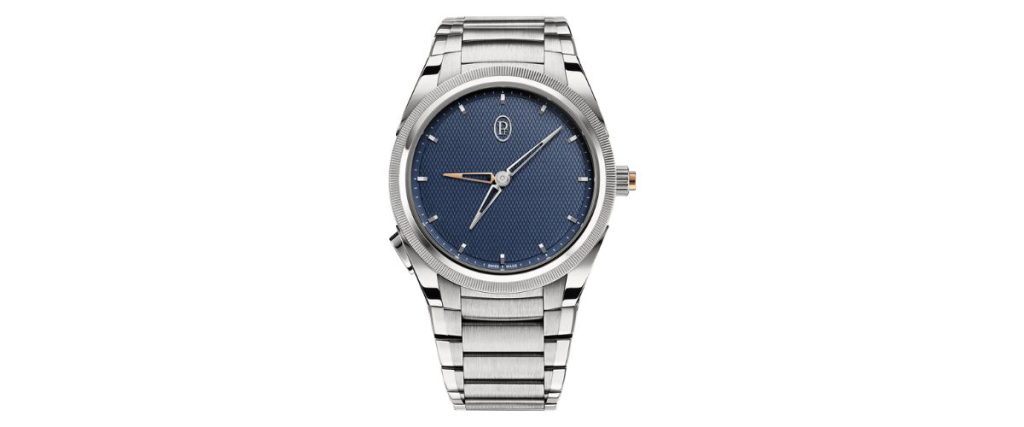
Finally, the Parmigiani Fleurier Tonda PF GMT Rattrapante is an exceptional chronometer watch with an opulent integrated case and bracelet, guilloche dial, and GMT complication. The soft lines of the case are engineered from stainless steel, while the bezel, with its detailed knurled finish, is machined from 950 platinum.
It sits on the wrist at 40mm wide and 10.7mm thick, secured by a three-row link bracelet with brushed and polished finishing. The blue grain d’Orge hand-guilloché dial presents two skeletonised hands for the hours and minutes and a rose gold hand for the GMT, all powered by the chronometer certified Caliber PF051.
Conclusion
We hope you now have a solid understanding of what a chronometer watch is and why these timepieces are so highly coveted. If precision and accuracy aren’t high on your list of priorities, a chronometer might be a little wasted on you.
However, if you value precision and reliability, especially if you have a job or lifestyle that requires high levels of timekeeping accuracy, then a chronometer watch would be a worthy investment. Or maybe you’re just like me, and you simply appreciate the intricate technology that goes on inside these watches. If so, a chronometer watch will no doubt enhance your daily life too.
About Exquisite Timepieces
Established in 1998, Exquisite Timepieces is your one-stop shop for all things luxury watches! We are an authorized dealer for 60+ luxury watch brands including Omega, Hublot, Seiko, & Longines! We are proud to showcase one of the world’s largest pre-owned watch collections, including renowned brands like Rolex and Patek Philippe. Check out our brand new watch arrivals here and popular pre-owned listings here.








